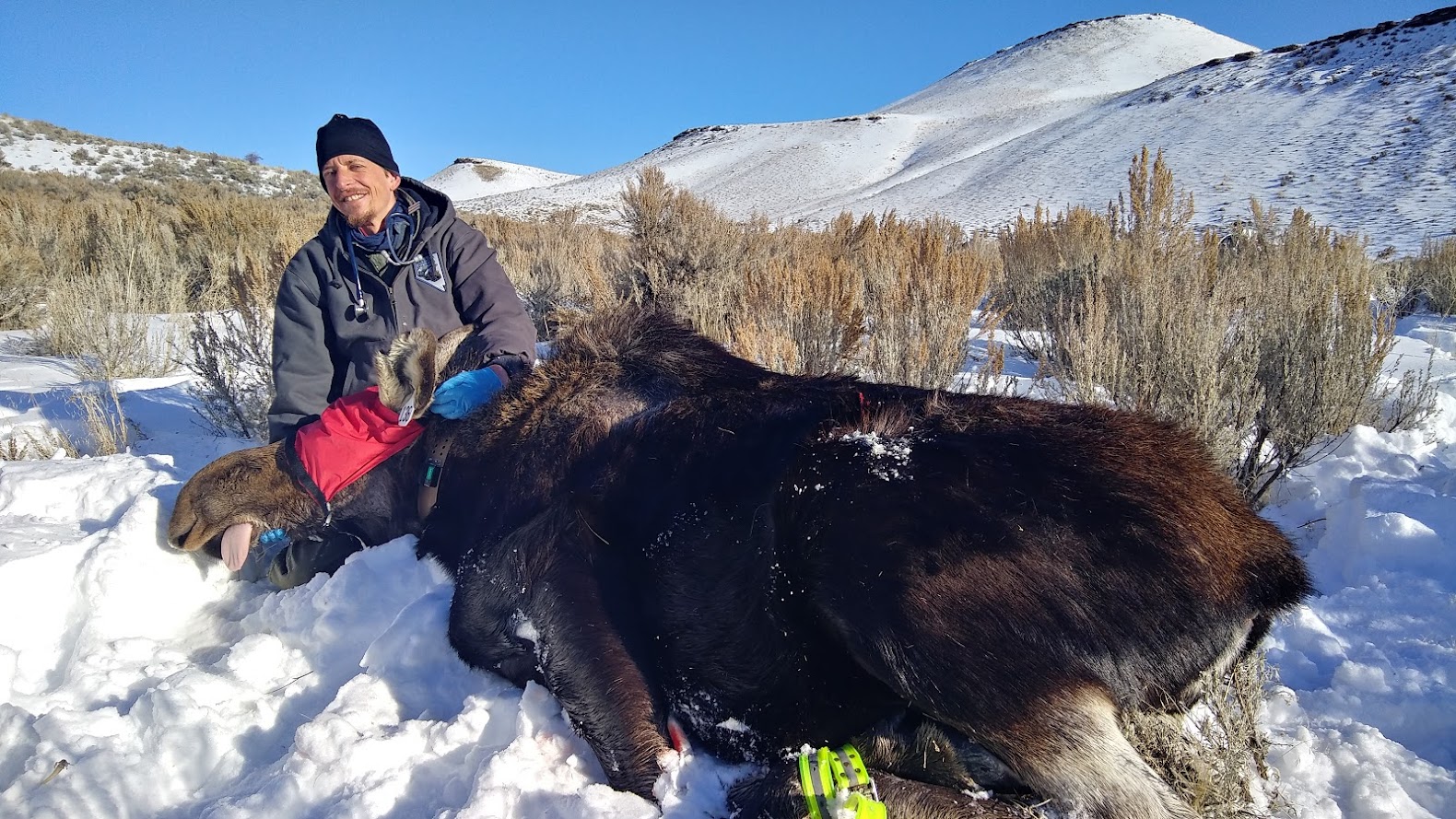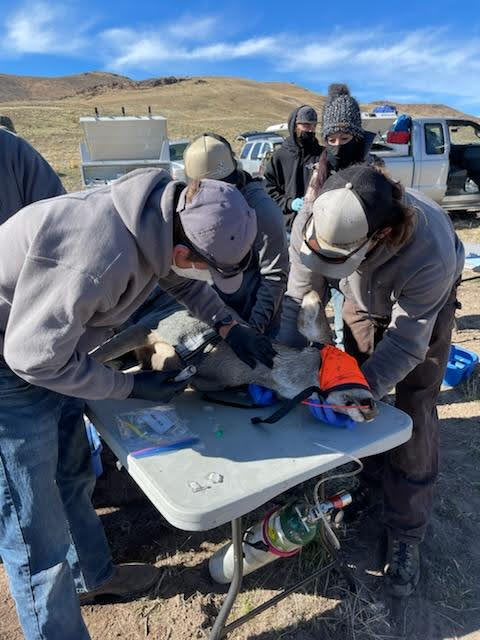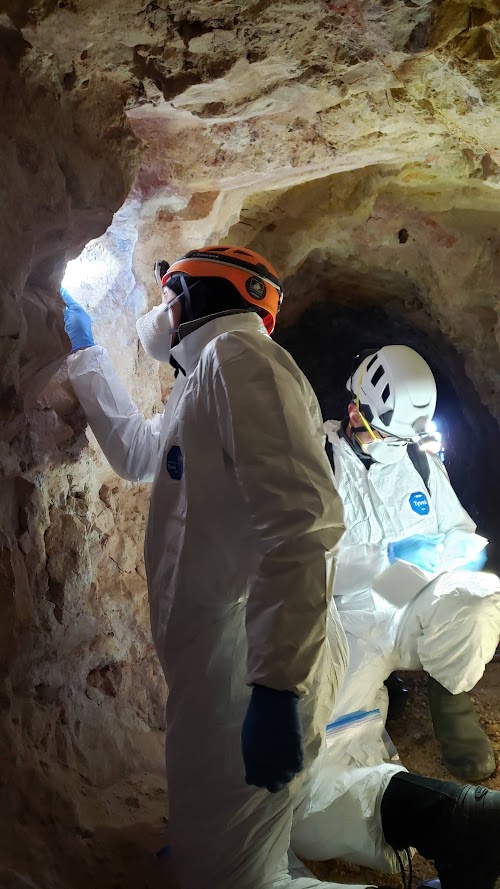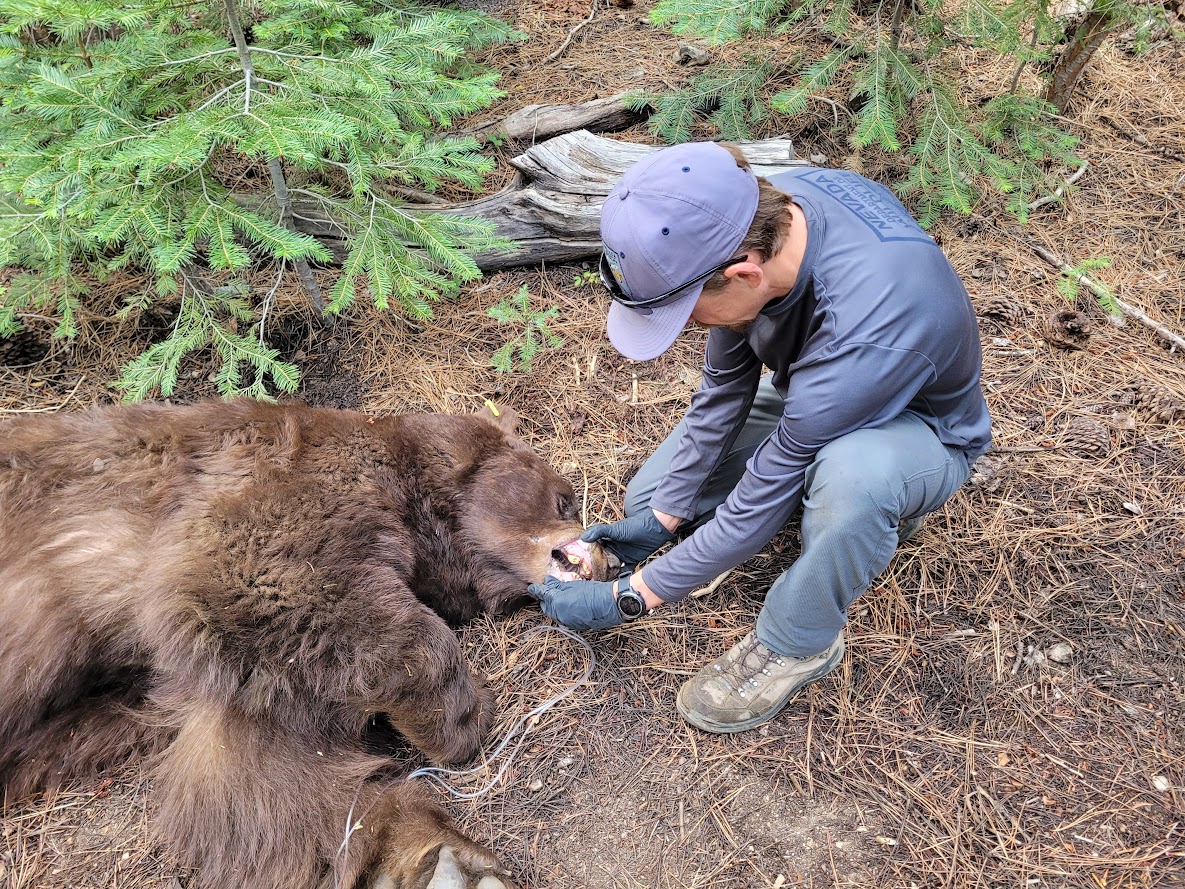Alumni Spotlight: Nate LaHue, DVM ‘13, Nevada State Wildlife Veterinarian
As the son of two veterinarians, Nate LaHue, DVM ’13, was exposed to veterinary medicine his whole life, though his interests never meshed with small animal practice. It was during his undergraduate years that he realized he could combine his interest in veterinary medicine with his passion for wildlife. “Through volunteering with the Cheetah Conservation Fund and through summer internships at the Palm Beach Zoo and Monterey Bay Aquarium, I realized that I could unite my two main interests,” he says.
Dr. LaHue ultimately decided to attend Cornell University College of Veterinary Medicine due to its smaller class sizes and case-based learning. He believes Cornell’s style of learning helped him to grow and succeed in his field, where there is often no textbook answer to the problems one faces. Additionally, Cornell’s curriculum offered Dr. LaHue the freedom to gain a wide variety of experiences, which he strongly believes shaped his career pathway.
“I’m a big fan of making the most of the summers you have between classes and clinical rotations,” he says. “It’s a great time to work at new clinics, work abroad, and gain additional experiences that you can’t get in school.”
"A lot of people hear ‘wildlife veterinarian’ and they think rehabilitation, but for a state wildlife veterinarian, you are less concerned about the individual and more focused on improving the health and performance of the population of a species or in a particular herd."
Dr. LaHue’s first summer in vet school was spent participating in Envirovet, an intensive course in wildlife and ecosystem health held in Florida and Tanzania. The next summer, he received funding from the Expanding Horizons Program and the Morris Animal Foundation Veterinary Student Scholars Program to work with Cornell wildlife veterinarian Dr. Robin Radcliffe, conducting a surveillance program for Trypanosoma evansi around Way Kambas National Park, a rhino breeding facility located in Indonesia.
The opportunity to develop a surveillance program helped Dr. LaHue realize that his interests lay primarily in wildlife population health and conservation rather than clinical medicine. “While clinical medicine is important, the idea of taking that knowledge and applying it to populations to conserve a species or improve the health of an ecosystem really captivated me. It really spoke to that part of my brain that likes big picture stuff.”
To supplement Cornell’s opportunities in wildlife and exotic pet medicine, Dr. LaHue sought out rotations at outside institutions. These included rotations at the Oregon Department of Fish and Wildlife, South Carolina Department of Natural Resources, San Diego Wild Animal Park, and Fossil Rim Wildlife Center.
After graduating from veterinary school, Dr. LaHue completed an internship in Agricultural Animal Medicine at Washington State University. His interest in population health then led him to complete a Masters of Preventive Veterinary Medicine (MPVM) at UC Davis. During this time, he conducted research on tuberculosis transmission between wildlife and livestock in Spain. This experience was readily applied to his current work. “There wasn’t a lot of epidemiology in vet school, so learning epidemiology, statistics, GIS, and modeling was essential to my development in population health.”
After the MPVM, Dr. LaHue took a position as the on-site veterinarian at a nongovernmental organization in Botswana as part of a cooperative program with Virginia Tech University. During his time there, he worked on a mongoose tuberculosis project, managed the laboratory, provided veterinary care for captive animals, and conducted public health research. He followed this role with stints as a small animal veterinarian and as the manager of the sport fish consumption program at the Wisconsin Department of Health Services. Of his winding career path, Dr. LaHue says, “Putting the wildlife track on hold was hard but it was also important to support my now-wife while she was completing a residency.”
In 2020, Dr. LaHue was hired as the sole veterinarian for the Nevada Department of Wildlife (NDOW). “Being the only veterinarian can be stressful, but it also means that you get to work on a diversity of issues and species. I love getting to work on a huge variety of things. Often, being a wildlife vet means being a jack of all trades.”
The majority of Dr. LaHue’s work includes conducting necropsies, doing disease investigations, providing veterinary support for captures, developing policies, conducting population disease monitoring and surveillance, and providing advice to biologists and other staff. He also provides immobilization and euthanasia training to field staff. A typical few weeks of work might include going into abandoned mines to sample bats for white nose syndrome, providing veterinary support for a bighorn sheep and mule deer helicopter capture, evaluating hunter harvest sheep heads for the presence of sinus tumors, and making policy recommendations to wardens and biologists. Of course, as with any position with a significant management component, a large percentage of time is spent on computer and office work.
“A lot of people hear ‘wildlife veterinarian’ and they think rehabilitation, but for a state wildlife veterinarian, you are less concerned about the individual and more focused on improving the health and performance of the population of a species or in a particular herd. While we treat individuals that can be released quickly to the wild or work with sending animals to rehabilitators for a few species, it’s not something that we focus on.”
For those interested in working for state wildlife agencies, Dr. LaHue emphasizes the need to have solid clinical skills, as well as a strong understanding of epidemiology and pathology. “You also must get comfortable responding to questions and concerns from the public and reporters and presenting to governing bodies. As the veterinarian, you are responsible for developing wildlife health policies for the entire state.”
Dr. LaHue also stresses the importance of understanding the unique cultures of wildlife agencies. One of his mentors advised him to try working at a state agency, even in a seasonal capacity, both to help future employment prospects and allow for this understanding to grow.
“For those interested in free-ranging wildlife, I encourage you to consider state wildlife agencies. While jobs are competitive, there seem to be more positions opening up and with the right set of skills and experience, these jobs are attainable. Working for the state gives you the opportunity to make a huge impact while also maintaining a good work-life balance.”
Written by Colleen Sorge ’20, DVM ’24
All images provided by Nate LaHue, DVM ‘13.




